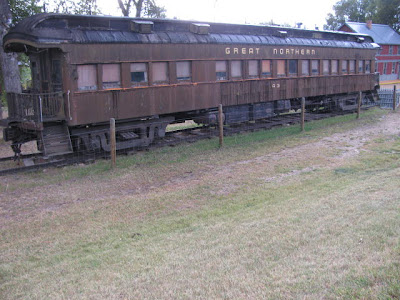Nevada City , Montana
ITW Nevada City, Montana



















Tracks of the StoneBear Copyright MCMLXIII Uncle Hargus ALL Rights reserved
ROF= Ring of fire Odyssey MEF-H = Marine Expeditionary Force- Hargus
YEL= Yellowstone Journey
Yellowstone Tracks of the StoneBear Old Faithful to Dillon
Sept 08
Nevada City, Montana
Although Nevada City is mostly a ghost town now... this was a significant place in American history of the West. Nevada City, Montana and sister city Virginia City, Montana are only a few miles apart. They were Gold mining boom towns in the 1860s and the pioneers coming here through indian lands incited the indian wars of the west.
I always like when I get to a place that has a historical piece of the American puzzle. The gold rush was on to get to Virginia City and Nevada City, Montana.
The Miner / prospectors formed up wagon trains in St Louis to head through Wyoming for the gold fields. Of the wagonmasters were John Bozeman and Jim Bridger going up through Wyoming at Fort Laramie across indian country to Nevada City. They promised in a treaty with the indians; they just wanted to traverse through the Powder River Pass to the gold mines with NO army forts. The indians agreed.
Well, the first wagon trains brought the army which built Fort Phil Kerney right in the heart of indian hunting land... the plains the Sioux and Cheyenne used to hunt their bison.
-- Also see Virginia City, MT post -- Also see the ITW blog post of the Fetterman massacre. -- also the Wagon Box fight post--
This incited and began the indian wars in this 1860s territory. This was the wild west; right here.
****
from Wikipedia: Virginia City
In 1863, the area was part of the Dakota Territory until March, when it became part of the newly formed Idaho Territory. On May 26, 1864, the Territory of Montana was formed, with Bannack briefly becoming the territorial capital, Virginia City would quickly take that title from Bannack.
In May 1863, a group of prospectors were headed towards the Yellowstone River and instead came upon a party of the Crow tribe and were forced to return to Bannack. Gold was discovered on the retreat trip when Bill Fairweather stuck a pick near Alder Creek joking he might find something to fund some tobacco.
The prospectors could not keep the site a secret. They were followed on their return to the gold bearing site and set up the town in order to formulate rules about individual gold claims. On June 16, 1863 under the name of "Verina" the township was formed a mile south of the gold fields. The name was meant to honor Varina Howell Davis, first and only First Lady of the Confederate States of America during the American Civil War. Verina, although in Union territory, was founded by men whose loyalties were thoroughly Confederate. Upon registration of the name, a Connecticut judge, G. G. Bissell, objected to their choice and recorded it as Virginia City. (In full irony, since Virginia itself had seceded, only to have West Virginia secede from the state and stay in the Union, it seemed an appropriate name for a Dixie city in Yankee territory.)
Within weeks Virginia City was a veritable boomtown of thousands in the midst of a gold rush with no law enforcement whatsoever, except for vigilantism. Most of Montana became under the rule of a Vigilance committee, the infamous Montana Vigilantes, which operated on both sides of the law. Their secret motto, 3-7-77 is still on the badges, patches, and car door insignia of the Montana Highway Patrol.
In 1864, the Montana Territory was carved out of Idaho Territory. Virginia City, claiming 10,000 citizens, was made the capital of the new territory in 1865. The first public school was built in 1866, but already the most easily accessible gold from placer mining had been exploited and development and population in the territory was moving towards Helena.
You never drink twice from the same stream.
Copyright MMXV ALL StoneBearTracks blog posts and photographs ALL Rights reserved
***Wikipedia Jim Bridger:
In 1864, he blazed the Bridger Trail, an alternate route from Wyoming to the gold fields of Montana that avoided the dangerous Bozeman Trail. Later, he served as guide and army scout during the first Powder River Expedition against the Sioux and Cheyenne that were blocking the Bozeman Trail (Red Cloud's War). In 1865 he was discharged at Fort Laramie.
You never drink twice from the same stream.
Copyright MMXV ALL StoneBearTracks blog posts and photographs ALL Rights reserved